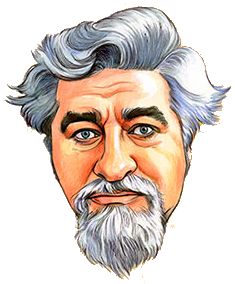- EldarProxy's Blog
- Log in to post comments
The Fat Flush Plan by Ann Louise Gittleman, Ph.D., C.N.S. – McGraw-Hill, 2002 – ISBN 0-07-138383-2 / 978-0-07-138383-7, 262 p.
Another book that claims “The Breakthrough Weight Loss Diet…” but in reality offers not a diet but a lifestyle and permanent food regime change. Not a big surprise, that’s the only case when any weight loss plan works.
On a positive side, it’s much more multi-faceted than other fad diets (Atkins, low-carbs, glycemic index, toxicity etc.) and it considers a lot of factors at the same time in an integrated picture.
Main factors it includes are:
· Toxicity and liver functions
· Water retention
· Deficit of essential fats
· Insulin/inflammation
· Stress/cortisol
Also a few interesting details on human metabolism.
Essential oils:
CLA (conjugated linoleic acid) – amazingly comes from meat, whole milk and full-fat dairy products. Should be available as a supplement though. Taking CLA during dieting result and a consequent weight gain (when stopped dieting) in 50% muscle/50% fat, while without it it’s 25% muscle/75% fat (usual weight gain proportion) Also 7 pound weight loss in the group taking CLA without any diet.
References:
· Journal of Nutrition, 2000
· American Chemical Society meeting in 2000, Dr. Pariza and Ola Gudmundsen, Ph.D. of the Scnadinavian Clinical Research Facility in Kjeller, Norway
· Isolated in early 80s by Michael Pariza, M.D. at the University of Wisconsin
Omega-6 LA (linolenic acid) – suffflower, subflower and corn oil. Can be converted by body into GLA and AA (arachidonic acid) and then into prostaglandins, but too many factors can (and usually do) interfere. Prostaglandins power ATP usage in cellular metabolism by controlling potassium-sodium balance (keeps potassium in and sodium out of cell) and activating brown fat (brown adipose tissue, brown because it’s rich in mitochondria)
GLA (gamma-linolenic acid) – comes with borage oil, evening primrose oil, or black currant seed oil. Stimulates thyroid/metabolism, tones skin.
Omega-6 fats stimulate thyroid.
ALA (alpha-linolenic acid) – one of Omega-3 fats, converted to EPA (eicosapentaenoic acid) then to DHA (docosahexaenoic acid) then to prostaglandins
Acids and prostaglandins:
GLA -> PGE1, anti-inflammatory and diuretic
AA -> PGE2, inflammation, retaining salt by kidney, water retention
EPA ->PGE3, control inflammation, prevent blood clots, more.
Insulin cycle:
Islets of Langerhans produce:
· Insulin – accumulation of fat, consumption of glucose by whole body. Reaction to high glucose level.
· Glucagon – release glycogen from the liver, release fat from fat cells to burn. Reaction to low glucose level in blood.
Excess body fat cells produce proteins that promt imflammation.
Stress and cortisol:
In stressed mind hypothalamus signals pituiry gland to release ACTH (adrenocorticotropic hormone). Adrenal gland reacts to ACTH in blod releasing stress hormones, which includes cortisol.
Cortisol also releases glucose and fatty acids to provide the energy for muscles. It also stimulate appetite to replenish reserves. Sugary foods also release cortisol leading to a loop.
Cortisol also make fat cells store fat (activates enzymes that do storing). Fat cells in abdomen has four times more cortisol receptors than other fat cells (they are fast energy source for stress after glycogen from liver).
References:
· Pamela Peeke, M.D. in The Annals of the New York Academy of Sciences, 1995 – stress results in fat.
· Elissa S. Epel in Psycho-Somatic Medicine, September-October 2000 – confirmation in study of a group of pregnant women
